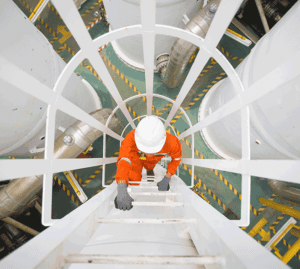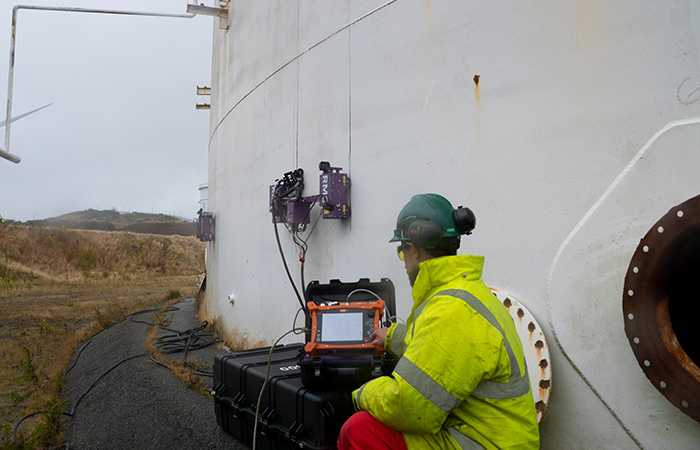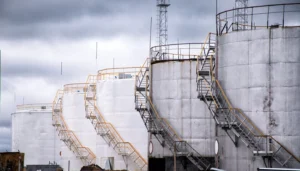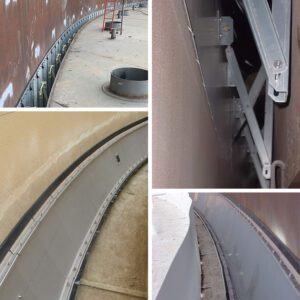One should know firsthand the importance of safety and compliance when it comes to above ground storage tanks. These tanks are used to store a variety of materials, including oil, chemicals, and water. However, they can also pose a significant risk if they are not properly maintained and inspected. In this article, Here you will acknowledge an Aboveground storage tank inspection checklist that will help ensure your tanks are in compliance and safe to use.

Aboveground store Inspection Checklist
Regular inspections are essential for maintaining above ground storage tanks. Here are some of the key items to include in your inspection checklist:
1. Exterior Inspection
The first thing to check is the exterior of the tank. Look for any signs of damage, such as dents, rust, or corrosion. If you notice any damage, it may need to be repaired or replaced. You should also check the tank’s foundation and make sure it is stable and level.
2. Interior Inspection Tank
Next, you will need to inspect the interior of the tank. This can be done by using a flashlight to look inside the tank. Check for any signs of corrosion or rust, as well as any debris or sediment that may have collected at the bottom of the tank.
3. Valves and Fittings
Check all valves and fittings for leaks or damage. Make sure they are properly secured and in good working condition. If you notice any issues, they should be repaired or replaced as soon as possible.
4. Tank Capacity
Verify the tank’s capacity and make sure it is not being overfilled. Overfilling the tank can cause it to rupture, which can be extremely dangerous. You should also make sure the tank is not being underfilled, as this can cause the tank to collapse.
5. Documentation
Finally, make sure all documentation related to the tank is up to date and easily accessible. This includes permits, inspection reports, and maintenance records.
Directank safe entry equipment is used for inspection needs.
Factors to Consider While Choosing Type of Storage Tank
Choosing the right type of storage tank is critical to ensuring the safety and efficiency of your operations. Here are some of the factors to consider when choosing a storage tank:
1. Material Compatibility:
Consider the type of substance that will be stored in the tank, such as chemicals, gases or liquids. Ensure the material of the tank is compatible with what it will hold to prevent reactions, erosion, or material degradation.
2. Capacity and Size:
Evaluate your storage requirements based on the volume and dimensions needed. Choose a tank with enough space for your needs and consider the footprint it will occupy on your site.
3. Design and Configuration:
Decide whether a vertical or horizontal tank would be more suitable for your application – keep in mind that each design has its advantages and limitations in terms of capacity, pressure, and footprint.
4. Temperature and Pressure Requirements:
Determine if your product requires temperature and pressure control during storage – this may affect the materials used in construction and any additional insulation, heating or cooling systems needed.
5. Installation Space:
Assess available space at the location where the storage tank will be installed. Ensure adequate access for installation equipment, maintenance, inspection, and potential future expansion.
6. Regulatory Compliance:
Check local codes, standards and regulations governing your industry to ensure compliance with any specific requirements for storage tanks – these may vary depending on location and nature of substances stored.
7. Maintenance Requirements:
Understand any regular maintenance needs for your chosen tank material, such as inspection intervals, cleaning processes or protective treatments – this can influence both initial costs and ongoing operating expenses.
8. Lifespan and Durable Materials:
Opt for materials that provide longevity and extended lifespan while minimising future costs resulting from wear, corrosion or damage due to environmental factors.
9. Environmental Impact:
If sustainability is important to you, prioritize environmentally friendly materials or features such as efficient insulation to minimize heat loss or systems designed for capturing emissions.
10. Cost-effectiveness:
Factor in initial investment costs, operating costs, and maintenance expenses when comparing different types of tanks. Select a storage tank that offers the best overall value based on these considerations.

Aboveground Storage Tank Maintenance
Regular maintenance is essential for keeping your above ground storage tanks in good working condition. Here are some tips for fuel storage tank maintenance:
1. Regular Inspections
As mentioned earlier, regular inspections are essential for maintaining your tanks. Make sure to follow the inspection checklist outlined earlier in this article.
2. Cleaning
Regular cleaning is also important for keeping your tanks in good condition. This includes removing any debris or sediment that may have collected at the bottom of the tank.
3. Repairs
If you notice any damage or issues during your inspections, it is important to address them as soon as possible. This may include repairing or replacing valves, fittings, or the tank itself.
Above ground storage tanks play a critical role in many industries, but they can also pose a significant risk if they are not properly maintained and inspected. By following the above ground storage tank inspection checklist and choosing the right type of storage tank, you can help ensure the safety and efficiency of your operations. Or you can check storage tank inspection service. Remember to also prioritize regular maintenance, including inspections, cleaning, and repairs, to keep your tanks in good working condition




